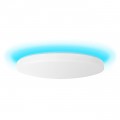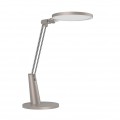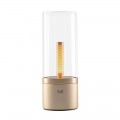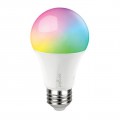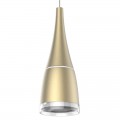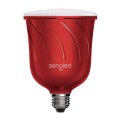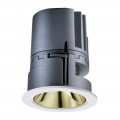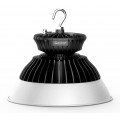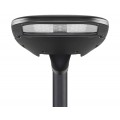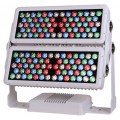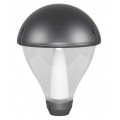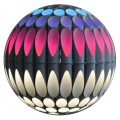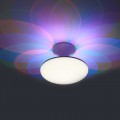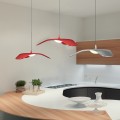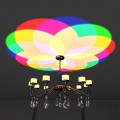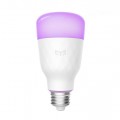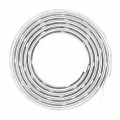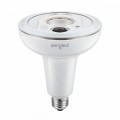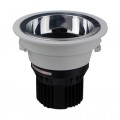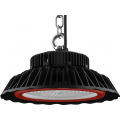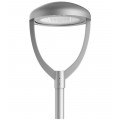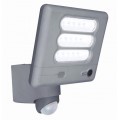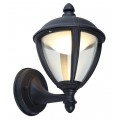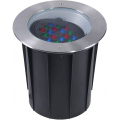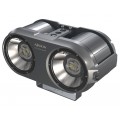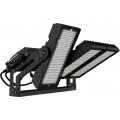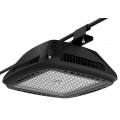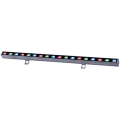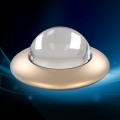Solid-state lighting from semiconductor LED light sources has obtained a lot of attention in general lighting applications today. LED technologies develop with the drive for energy efficiency and clean technologies throughout the world. For many decades incandescent lamps have been the first choice for illumination in residential applications. These light sources could conveniently be dimmed using what are known as phase-cut dimmers. This has brought about a large installed base of such dimmers. These dimmers are made to operate on comparatively large loads with a substantial effective power over apparent power. In the present day, there is an escalating interest to replace conventional incandescent bulbs with LEDs. Nonetheless, how to make LED driving apparatus that work with dimmers in existing lighting products becomes a challenge for lighting designers to design products that work with various legacy dimming-control technologies and in many cases that provide the ability to operate in emerging wireless-network-control scenarios.
LED lamps offer minimal loads (typical a factor of 10 less than the equivalent incandescent lamp) along with an extremely nonlinear behavior and a huge capacitive impedance because of the presence of EMI (electromagnetic interference) filter networks. As a result of these factors, LED lights cannot be dimmed inherently using existing phase-cut dimmers. As is also recognized, phase control dimmers "chop" an AC waveform to decrease power to light loads, thereby producing a diminishing of light intensity or a "dimming" of a light source. The phase control dimming circuit may comprise the Triac (triode for alternating current), the diode or other suitable circuit elements for cutting off part of the AC input signal in order that the brightness of the light sources may be adjusted as required. The chop or distortion of the AC waveform primarily consists of a portion of the AC waveform being removed for a period of time of each AC cycle (180 degrees). Most incandescent lamps use sufficient current from the AC power source to allow consistent and efficient operation of a TRIAC. However, the low current utilized by efficient power converters to drive LED lamps will not provide enough current to keep a Triac conducting for the expected portion of the AC line period. Triac dimmers were originally designed to handle the wattage induced by incandescent bulbs. Although phase angle dimming works well with incandescent lamps that receive the altered AC line voltage directly, it often creates problems for LED lamps driven by a switching power converter.
Different from incandescent and other resistive lighting devices which respond naturally with no error to a chopped sine wave generated by a phase-cutting dimmer, LEDs may incur several issues when placed on such phase chopping dimmers, including low end drop out, triac misfiring, minimum load issues, high end flicker, and large steps in light output. The LEDs within the LED bulbs work on direct current (DC) while the incandescent light bulbs run on alternating current (AC), which presents some challenges with direct replacements of incandescent light bulbs with LED bulbs. The electrical characteristics of LEDs are such that small variations in the voltage applied to the LED lamp will result in appreciable current changes. Furthermore, ambient temperature changes will also end in LED current changes by changing the forward drop across the LEDs. Most dimmers employed in lighting applications, for example home lighting, commercial lighting, and traffic signaling, are prepared for use on locally available AC grid voltage. These dimmers operate with higher energy consumption luminaires that typically present as resistive loads to their controllers.
Some LED drivers use analog dimming to control LED brightness levels. Analog dimming tunes its brightness by changing forward current of the LEDs. Analog dimming provides a constant current to the LEDs (i.e., without pulsing). Nonetheless, as the light output of LED devices is only roughly proportional to the current flowing in them, with diminishing efficiency as the current rises, and as the junction temperature of the LED devices increases. It is practical to compensate for this non-linear behavior by calibrating the level of current provided, for various intended brightness levels. The other basic method is to employ a fixed current amplitude, and after that to interrupt the flow of current at some frequency and duty cycle. This latter method is usually known as Pulse-Width Modulation (PWM) dimming. This approach can control LED brightness while maintaining color quality. In spite of this, this technique demands a high frequency to prevent flickering that may be observable by human eyes and/or cause digital noise, which is undesired. Additionally, using known analog amplitude reduction and PWM dimming it is sometimes complicated to acquire good efficiency and good performance over an entire dimming range of 0% light output (no light output) to 100% light output(full light output).
Deficiency of universal compatibility will prevent or greatly reduce the introduction of LED lamps into the marketplace as replacements or retrofits for traditional incandescent lamps. In an effort to achieve a dimming function without upgrading the conventional dimmers, the LED lamps must have a controller that senses the dimming and outputs a DC current to the LEDs that is proportional to the dimming. To prevent unacceptable results for instance flickering produced by a Triac dimmer, a power converter for an LED lamp needs to be specially developed to identify and respond to the voltage from a TRIAC dimmer circuit in a desirable way. To have a high power factor in LED applications, a power factor correction circuit is commonly employed to provide DC current to the LEDs and keep the input AC voltage and current in phase. Nevertheless, this adds cost to the whole system, severely reduces the design flexibility as a result of increased circuit components, and can even degrade the overall efficiency of the system.

















